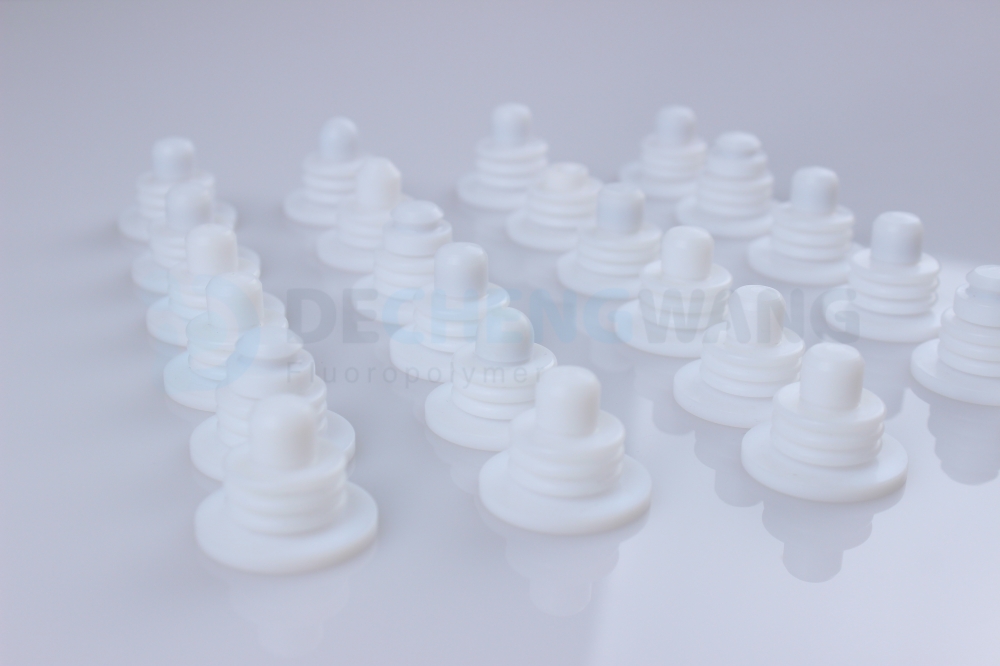
Applications: PTFE Bellows seals for valves
Bellows Mechanical Seal are a type of mechanical seal where the spring element is a bellows. They are a critical component in preventing fluid or gas
PEEK, which stands for Polyether Ether ketone, is a semi-crystalline plastic material just like PVDF material, but it belongs to a different family called Polyaryletherketones (PAEKs). The plastics in this family are known to have an unusual combination of useful engineering properties of which some of them include thermal stability, chemical & combustion resistance, good electrical insulation, and high melting point. This combination makes them unique and useful for a lot of applications.
The good part is that the crystalline structure of these polymers allows all these properties to be maintained at temperatures close to their melting point.
Asides this, there are other things you need to know about the PEEK polymer. Of course, as it has some good parts, some limitations can be named to it. In this post, we will enlighten you on everything you need to know about this outstanding polymer with a plethora of engineering properties.
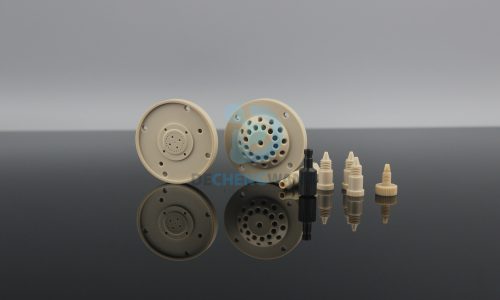
PEEK is a colorless organic thermoplastic material in the PAEK family, which consists of other plastic materials like PEK, PEEKK, PEKK, and PEKEKK. PEEK, which is the most widely used and produced PAEK material on large scale, was first discovered in November 1978 before it was introduced into the market by Victrex PLC, formerly known as Imperial Chemical Industries (ICI) in the early 1980s.
PEEK material, which is semi-crystalline, has strong mechanical and chemical resistance properties, making it suitable for high temperatures. The crystallinity, as well as the mechanical and chemical structure of PEEK can be affected by the processing conditions used in making it.
Standard PEEK polymers have a tensile strength that’s between the range of 90 to 100 MPa, and a Young modulus of 3.6 GPa. While it features a glass transition temperature of about 143 degrees Celsius, it has a melting point of 340 degrees Celsius, and the ability to be continually used at a temperature of 250 degrees Celsius. According to the UL 94 standard flammability ratings, PEEK material has a V-0 rating as it does not produce much smoke and harmful gas when it’s exposed to flame.
PEEK has a high level of resistance to aqueous and organic conditions, as well as thermal deterioration. At high temperatures, halogens, strong acids, as well as some halogenated chemicals and aliphatic hydrocarbons all attack it. At normal temperature, it totally dissolves in strong sulfuric acid.
While PEEK can come as a composite, fiberglass, or carbon fiber reinforcement, the unreinforced PEEK is known to provide the highest elongation and endurance of all grades of PEEK materials.
PEEK polymer is one of the few polymers that can be used in applications that require an ultra-high vacuum. Some of the other items it’s used to make are bearings, pumps, piston parts, valves, compressor plates, and cable insulators. It is a fluoropolymer alternative that is highly durable, especially in demanding applications.
Quite a number of industries, including aerospace, automotive, and chemical processing industries, take advantage of PEEK material properties. However, it’s very expensive, hence why some industries use alternative polymers and techniques like PTFE machining techniques.
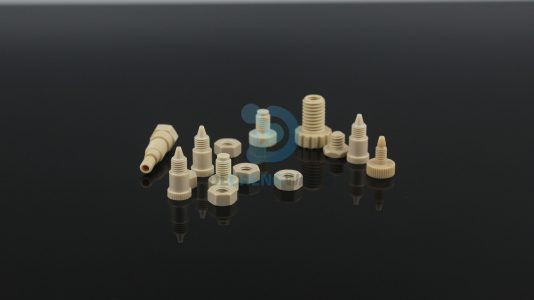
Here are the main PEEK properties that make it one of the most talked about polymers.
PEEK has a strong tensile strength that can be significantly increased by adding carbon fiber as reinforcement, thereby having a total value of about 29,000 psi (200 MPa).
Even when the PEEK material is put under an extremely high temperature of about 300 degrees Celsius, a significant portion of the strength is retained.
While PEEK is known to be a hard material, its bending modulus can be improved by adding reinforcements like glass or carbon fiber. This does not just make the PEEK polymer more flexible, it also enhances its other properties, such as resistance to fatigue and heat conductivity.
PEEK is very resistant to creep, meaning that it does not permanently deform when put under heavy mechanical stress.
In situations where the material must be able to sustain heavy loads for extended periods at high temperatures without permanent deformation, the combination of its flexural and tensile characteristics provides an outstanding balance.
In comparison to other plastic materials, PEEK produces a significantly lesser amount of harmful smoke when it is exposed to flame. It has an LOI of 35% and a V-0 flammability rating of 1.45 mm.
PEEK has high surface and volume resistivity, meaning that in a wide temperature range and varying environmental conditions, it will still have its strong insulating qualities.
Its crystallinity enhances its resistance to a wide range of liquids, as well as boosting its fatigue performance.
It has high resistance to biodegradation. PEEK can’t be dissolved by common solvents. It is not put under hydrolysis process, which means that it can be used in steam or high-pressure water for a long time without suffering substantial property degradation.
Other properties and performance include low friction, great dimensional stability, good insulating qualities, outstanding sterilization resistance at high temperatures, biocompatibility, durability, and inherent purity.
Material Data Sheet
General Properties | FDA food contact compliant Excellent wear & friction behavior Low permeability | Good dimensional stability at high temperature Good electrical strength High mechanical strength, stiffness, and creep resistance | Fatigue resistant Flame retardant Excellent chemical resistance | High energy radiation resistant Radiation and heat sterilizable Low abrasion at the counterpart surface of soft metal |
Physical Properties | Density (specific gravity) Water Absorption (Max.) 24 hours Flammability | ASTM D-792 ASTM D-570 | g/cm3 (gm / cc) % – | 1.30 – 1.32 0.1 V-0 |
Mechanical Properties | Tensile strength Elongation of break Tensile modulus Hardness shore Hardness rockwell M scale | ASTM D-638 ASTM D-638 ASTM D-638 ASTM D-2240 ASTM D785 | MPA % Gpa Shore D Rockwell | Equal to or more than 95 Equal to or more than 10 3.3 – 4 Equal to or more than 80 Equal to or more than 90 |
Thermal properties | Peak melting temperature Specific heat capacity, at 23oC Thermal conductivity, at 23oC Deflection temperature, 1.8MPa unannealed Relative thermal index – electrical Relative thermal index – mechanical w/o impact Relative thermal index – mechanical w/ impact | ASTM D-3418 DSC ASTM E-1530 ASTM D-648 UL746B UL746B UL746B | oC kJ kg-1 oC-1 W/mK oC oC oC oC | 340 – 343 2.2 0.25 157 260 240 180 |
Electrical Properties | Electrical strength, 2mm thick Surface resistivity Volume resistivity | ASTM D-149 ASTM D-258 ASTM D-257 | Kv/mm ohm ohm cm | 22 >1017 >1017 |
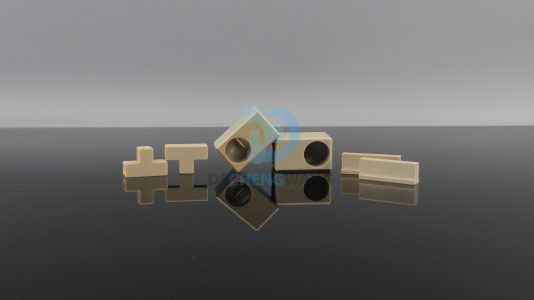
Despite all the properties and benefits of PEEK, it has some noticeable drawbacks. Here they are:
When PEEK overheats and burns, carbon monoxide and carbon dioxide are produced. If the fire condition is not conducive, several toxic decompositions can be formed.
It’s most often impossible to recycle PEEK materials, which means there are always a lot of waste products. In some sense, it’s not cost-effective. The waste products are disposed off by landfilling or in the incinerator.
It can only be processed appropriately at high temperatures.
Some acids like concentrated sulfuric, nitric, and chromic get attached to it. PEEK is also attacked by halogens and sodium.
It has a low resistance ability to UV light.
PEEK material is expensive and mostly used for extremely demanding applications.
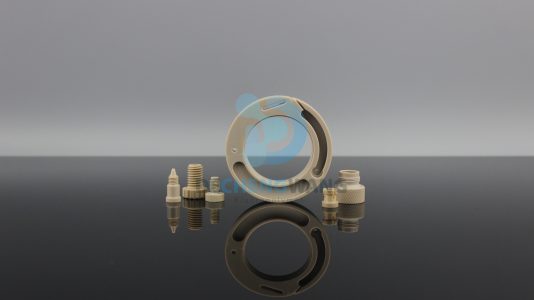
Polyether Ether Ketone (PEEK) can be produced using several industrial techniques. The most common technique used to produce PEEK is by allowing bisphenolate to react with difluorobenzophenone.
PEEK is insoluble, which necessitates precise reaction conditions during its synthesis. It can be made by nucleophilically substituting hydroquinone into 4,4’-difluorobenzophenone in the presence of anhydrous potassium carbonate while being exposed to microwave radiation to manufacture a good yield. This procedure is carried out in a three-necked flask equipped with a Dean-Stark trap, condenser, nitrogen inlet, and mechanical stirrer.
The needed components are 1.31 gram of 4,4’- difluorobenzophenone, 0.66gram of hydroquinone, and 1.24gram of K2CO3, which has to be poured into a mixture of 15 ml solvents and 35ml toluene. Toluene is used for the removal of water.
Then, the flask is put in a microwave device with a 700W maximum power output and 2455 MHz. This procedure must be carried out with steady stirring in a nitrogen environment. After this, the mixture should be heated under reflux for 20 minutes between 80 to 110 degrees Celsius.
Azeotropic distillation is then used to remove the water content produced during the phenate’s synthesis. Following the removal of the water, the temperature should be increased to 110-130 degrees Celsius for the next 15 minutes. The toluene is as well removed at this point. With this, the temperature can be increased to 180-200 degrees Celsius.
Now, the reaction is left to cool at room temperature and the polymer is produced by precipitating from water. The polymer is refluxed with water and subjected to Soxhlet extraction using methanol. Care must be taken when cleaning the polymer to make sure that solvent and inorganic salt are totally removed. At this point, the polymer is vacuum-dried at 100 degrees Celsius for 24 hours.
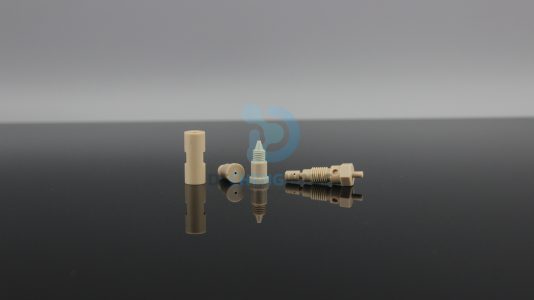
Traditional methods like injection molding, extrusion, and 3D printing can be used to process PEEK polymers. However, you need to note that the method used will in one way or the other affect the crystallinity and mechanical properties of the PEEK polymer.
Salient points to note for processing PEEK polymers:
The PEEK material should be dried for e hours at a temperature of 150 degrees Celsius or for 2 hours at 180 degrees Celsius. This helps to reduce any molding defect that might occur while processing.
The temperature range required for processing PEEK is within 370 to 420 degrees Celsius.
During the processing of PEEK, no corrosive gasses are released.
Explained below are the three major ways PEEK polymers can be processed.
The appropriate mold temperature range to get good crystallization and reduce warping is between 160 and 190 degrees Celsius.
You can post-crystallize the material at 200 degrees Celsius, but this process is not recommended for applications that require high dimensional stability.
PEEK injection molding is appropriate for small parts that require tight dimensional tolerances.
The injection pressure range is within 70 to 140 MPa.
Unfilled mold shrinkage is between 1.2 to 2.4%, while filled mold shrinkage is between 0.1 to 1.1%.
The influence of the cooling temperature on the material’s crystallinity and performance is very strong.
Cooling cylinders at 50 degrees Celsius produce translucent amorphous material when carrying out film and sheet extrusion.
When the cooling cylinders are at 170 degrees Celsius, they lead to opaque and highly crystalline materials.
By using the extrusion method, oriented and bi-oriented films can be produced.
Thanks to PEEK’s unique properties, it can be processed with 3D printing even in complex design geometry, which is not possible with other materials. To perform 3D printing of PEEK, Fused Deposition Modeling (FDM) or Fused Filament Fabrication (FFF) techniques are used.
Nozzle temperature should be between the range of 360 and 400 degrees Celsius.
Heated bed at 120 degrees Celsius.
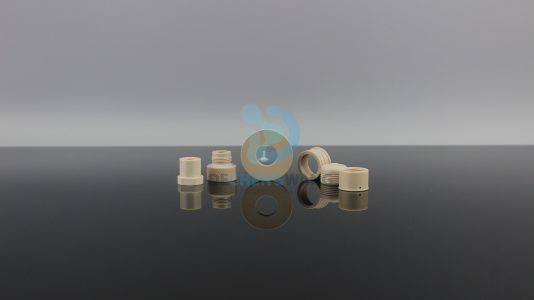
PEEK materials are used for several applications. Some of them are stated below.
The most common application of PEEK is the manufacturing of equipment for improved dry and lubricated surface interaction in machinery. This equipment also offers excellent fatigue qualities, great mechanical performance over a wide range of temperatures, and ease of processing. Some of these equipment are washers, bearings, braking & air-conditioning systems, under-the-hood piston units, and seals (PTFE seals are also highly-rated).
PEEK is used to make critical engine parts as the material can resist high temperature and pressure. It’s also used for the tribological interaction of lubricated and dry material contacts.
PEEK polymer is used to provide protection against rain erosion in aircraft external parts.
It’s used in the interior parts of aircrafts to protect against fire hazards. PEEK has inherent flame retardancy, low smoke, and reduced harmful gas emission, which helps to protect lives and properties against fire outbreaks.
PEEK is used for producing convoluted tubes to secure wires and fiber optic filaments.
Gradually, PEEK polymer is replacing aluminum for the production of handles on dental syringes and sterile boxes that are used to store files.
The polymer is used for demanding applications in the health sector as it can resist up to 3,000 sterilization cycles in an autoclave even at 134 degrees Celsius temperature.
It’s used for applications that are exposed to steam, hot water, solvents, and chemicals. PEEK has great mechanical strength, outstanding cracking resistance, and hydrolytic stability, which makes it capable of handling harsh and abrasive conditions.
This polymer provides enhanced biocompatibility of load-bearing implants.
PEEK is used to make parts with long-term operating dependability in a wide range of temperature pressure and frequency fluctuations.
PEEK’s inherent purity combined with its mechanical and chemical stability, reduces contamination and increases safety when handling silicon wafers.
Thanks to its outstanding thermal properties, it can withstand the high temperatures they are exposed to during soldering operations.
These are some industries with the PEEK parts they use.

PEEK parts, such as seals, washers, and bearings are used in the automotive industry to replace more noise-making and heavy components as each day passes. With the growing trend of small engine components, this polymer is used to displace metals and other components that are heavy. PEEK possesses great mechanical properties, which makes it suitable over a wide range of temperatures.

Formerly, aluminum was known as the sole material used in the aerospace industry. But now, PEEK materials and its composites are displacing aluminum. A large number of components with tight tolerances can be cost-effectively produced without additional assembly or modification.
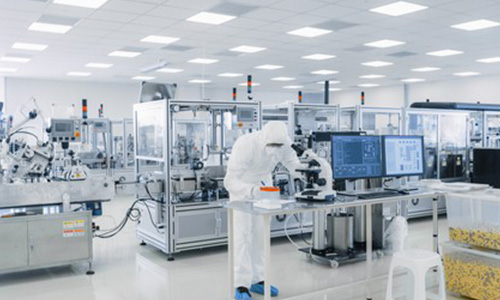
PEEK is used to produce medical parts like dental instruments, endoscopes, and dialyzers. These parts are cost-effective, innovative with excellent wear, heat, chemical, and electrical resistance, making them suitable for all medical applications.
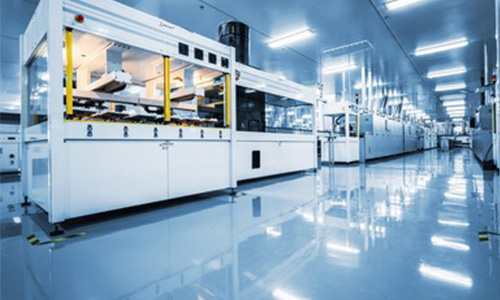
The major PEEK parts used in the electrical and electronic industry are electrical insulators. It is applicable in situations that require high temperatures, such as soldering machines. Some other PEEK parts used are coaxial connector jacks that are used in hands-free telephone kits.
Other industrial applications of PEEK parts are:
PEEK parts are now being used in food contact applications.
For regenerative pumps, PEEK is used to replace stainless steel in the making of impeller wheels. It offers a significant decrease in wear and noise.
In modern connector technology, PEEK parts are also seen in pipe and hose couplings. They are capable of resisting high pressures up to 25,000 psi and temperatures up to 260 degrees Celsius.
PVDF and PTFE are two important industrial polymer materials that are made up of a large number of monomer units. However, there are some notable differences between these two polymers.
In the next series of paragraphs, we will state their differences. But before that, let’s quickly have a recap of what PEEK is, and then we dive into what PTFE is. After this, we head to their differences.
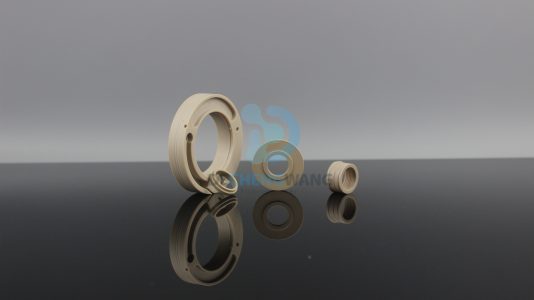
PEEK is a high-performing semi-crystalline engineering thermoplastic that exhibits exceptional resistance to chemicals, low moisture absorption, flame retardancy, excellent mechanical strength over a wide range of temperatures, and dimensional stability. Moreover, its crystalline nature contributes to its exceptional properties.
PEEK polymer is strong, hard, and tough, with exceptional creep resistance, which is why it’s used for demanding applications where thermal, chemical, and combustion qualities are crucial to performance. When used in high pressure and temperature environments, PEEK maintains its stiffness and strength.
PTFE, which is commonly called by its trade name, “Teflon”, stands for Polytetrafluoroethylene. It’s a synthetic polymer with special properties that make it a valuable industrial material used for several applications. These properties include strong resistance to chemical and temperature, durability, and dielectric properties.
It’s a common material used to make everyday products, such as non-stick cookware pans, car parts, medical devices, and many other things.
Here are the differences that can be found between PEEK machined parts and PTFE machined parts.
Parameter | PEEK | PTFE |
Tensile Strength | 90 – 100 MPa | 25 – 35 MPa |
Elongation | 30% – 40% | 350% – 400% |
Flexural Modulus | 3900 MPa | 495 MPa |
Temperature Resistance | Approximately 250oC | Approximately 250oC |
Chemical Resistance | Vulnerable Sulfuric acid | Virtually inert |
Friction Coefficient | 0.35 – 0.45 | 0.03 – 0.05 |
Compressive Strength | 140 MPa | 30 – 40 MPa |
Dielectric Strength | 50 Kv/mm | 50 – 150 Kv/mm |
Machinability | Excellent | Good |
Cost | Very costly | Moderately expensive |
Dechengwang provides a wide range of PEEK parts that possess great properties and performance, such as excellent chemical resistance, low moisture absorption, good wear & abrasion resistance, high-temperature tenacity, exceptional stability, exceptional radiation resistance, low flammability, and many more. We make custom PEEK parts that are applicable to many industries, such as automotive, aerospace, medical, electrical, and electronics.
Other than PEEK, our manufacturing capabilities extend to a wide range of materials, including PTFE, PVDF, PFA, and PCTFE. Amongst all other PEEK and PTFE components manufacturers, we are highly-rated for providing unique items that cut across several applications. Some of them are insulators, seals, bellows, labware, bushings, tubes, rods, films, and sheets.
PEEK polymer is a high temperature semi-crystalline material that’s used in applications that require chemical and harsh conditions. This polymer has so many intrinsic properties that make it stand out amongst other polymers. It’s used in several industries for different applications. However, it’s plagued with one major demerit, which is its cost. It’s relatively more expensive than most polymers.

Bellows Mechanical Seal are a type of mechanical seal where the spring element is a bellows. They are a critical component in preventing fluid or gas
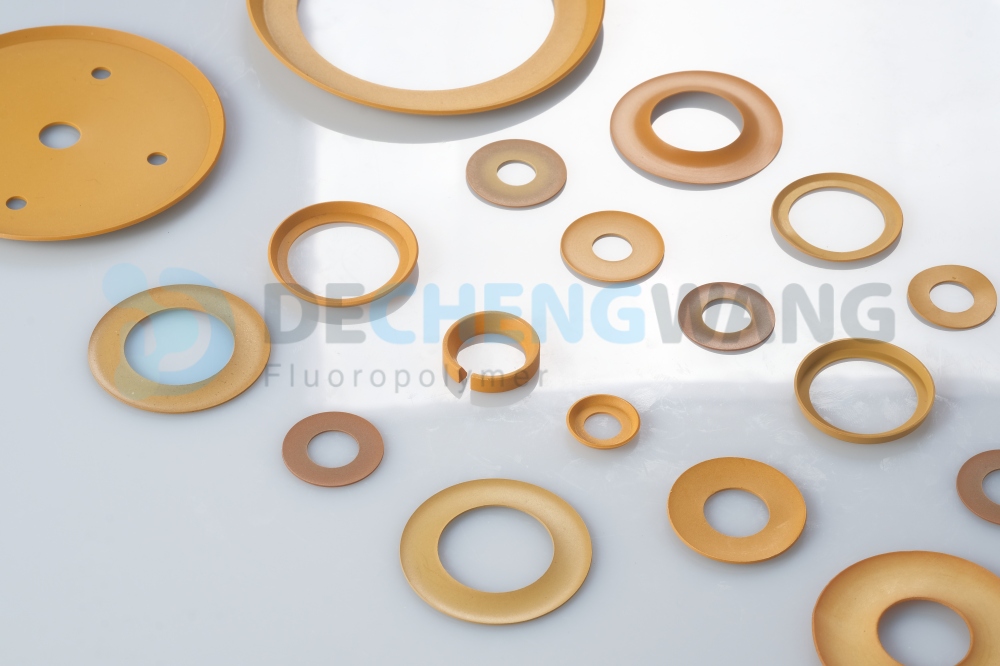
In the world of engineering and manufacturing, where precision and efficiency are paramount, the role of wear resistance plastic has evolved far beyond their conventional image.
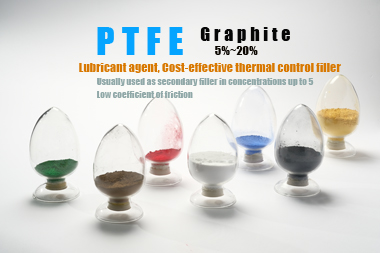
PTFE is a versatile polymer with outstanding properties like chemical resistance, low friction coefficient (self-lubricating), non-stick nature, and excellent electrical insulation. However, it also has some